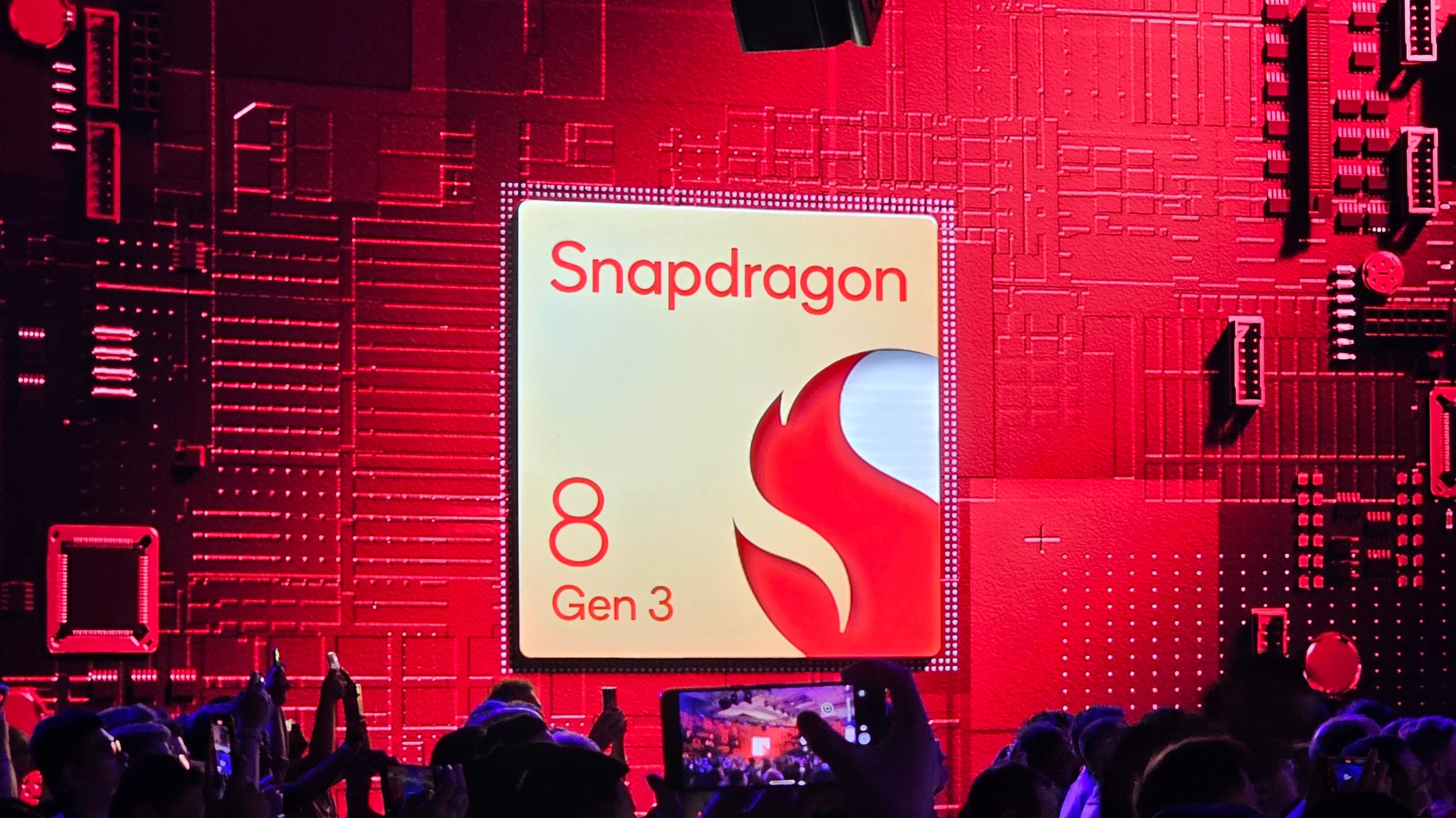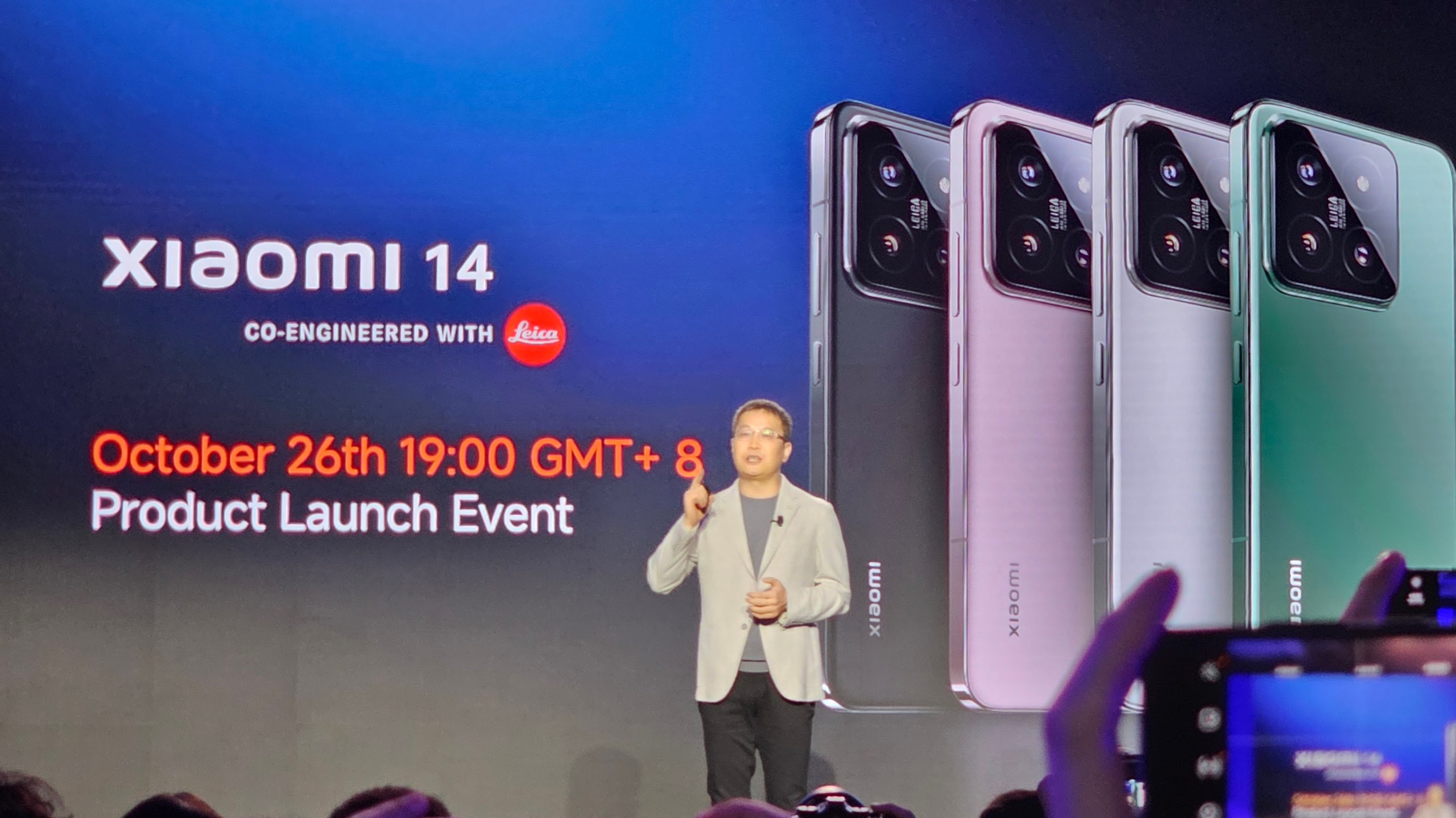The Snapdragon 8 Gen 3 is here to run AI on your next phone, whatever that means
Whatever AI might be, it's the future for smartphones

Qualcomm has announced the Snapdragon 8 Gen 3 chipset at its Qualcomm Snapdragon Summit 2023 in Maui. The company paid for my trip to the island to check out the next platform that will power phones that could include the Galaxy S24, the OnePlus 12, and many more of the best phones we expect to see in 2024. The fulcrum of the next gen platform will be AI features, though it remains unclear exactly what those will be, and that’s precisely the point.
Today’s processing platforms, on most mobile devices and laptops, are made up of the CPU for application processing and the GPU for graphics and specialized applications. The Qualcomm Snapdragon 8 Gen 3, like the Google Tensor chipsets, has its own Neural Processing Unit, or NPU, that is designed to run machine learning (ML) applications and functions. Unlike Google’s Tensor chipset, however, Qualcomm is not locking its NPU to one company’s ML features.
Machine learning is big for Qualcomm this year. Meta’s Ray Ban Smart Glasses work with a Qualcomm Snapdragon AR1 Gen 1 chipset running similar ML concepts. Microsoft has tested its Copilot AI software with Qualcomm’s next-generation Snapdragon X Elite laptop chipset. Now, phone makers will be able to bundle AI features into the device using the Snapdragon 8 Gen 3 platform
Qualcomm demonstrated the Snapdragon 8 Gen 3 chipset using the Stable Diffusion generative AI image engine to create a new image from a prompt request, on a mobile device and not in the cloud, in less than one second. The Gen 3 chipset can use large language models (LLM) like Meta’s Llama model to create generative text responses on-device using billions of possible instruction parameters.
Qualcomm said that the Snapdragon 8 Gen 3 will be used in devices from manufacturers including ASUS, Honor, iQOO, MEIZU, NIO, Nubia, OnePlus, OPPO, realme, Redmi, RedMagic, Sony, vivo, Xiaomi, and ZTE. The first devices will appear on the market in the coming weeks, not months, according to Qualcomm.
The list above excludes Samsung and Motorola (Lenovo). Does that mean those companies won’t be using the next-gen Snapdragon? No. It means they didn’t want their names on this press release giving away the details on new phones. Samsung and Motorola will make their own news, thank you very much, Qualcomm.
Will the Snapdragon 8 Gen 3 help Android beat Apple?

The first phone to use the Snapdragon 8 Gen 3 platform won’t be a mystery, it will be the Xiaomi 14, and Xiaomi’s President William Lu was on hand to pre-announce the new phone for the following day. He explained that even though it wasn’t being labeled a Pro device, we should expect premiere performance from the first Snapdragon 8 Gen 3 phone.
Get daily insight, inspiration and deals in your inbox
Sign up for breaking news, reviews, opinion, top tech deals, and more.
Qualcomm also explained that Xiaomi would be adopting all of the technologies Qualcomm is demonstrating at the Snapdragon Summit, including the generative AI features and new image editing features. That’s important, because while Qualcomm makes the chipset that enables these features, it is the phone makers that decide what a phone can do.
The Snapdragon 8 Gen 3 can make an image two times larger, for instance. Using Stable Diffusion, it can zoom out of an image and create a new periphery for the scene. If Samsung or OnePlus or Motorola don’t include software to take advantage of the NPU engine, this zoom out feature, and all of Qualcomm’s suggested features, will be dead on arrival and won’t be available on your next phone.
The biggest question will be whether the Snapdragon 8 Gen 3 will finally outperform the in-house chipsets developed by Apple. While Android phones used to be faster than Apple’s devices, since Apple started developing its own mobile processors and platforms, its phones have consistently outperformed the best Android phones in benchmarks and real world testing.
When Qualcomm showed off its new laptop processor, the Snapdragon X Elite, it made very clear that it had the Apple M2 laptop chip in its crosshairs. There were no such callouts when Qualcomm showed off its Snapdragon 8 Gen 3 mobile chipset. We’ll have to get the best Gen 3 devices in hand to test them ourselves and see if the Snapdragon can finally beat the Bionic, or even the newer A17 Pro.
There's no clear idea of what an AI phone will be

If you listen to Qualcomm, they will gladly tell you that they have been predicting AI on mobile devices for more than five years. They will tell you that AI is the future for phones, and every phone will rely on AI in the future. They just won’t tell you what that phone will look like.
Right now, AI seems to be a shortcut to even better features at best, and a series of parlor tricks at worst. Qualcomm showed us a demo phone that could use a time-of-flight sensor, like that found on the Google Pixel 8 Pro and Apple iPhone 15 Pro Max (neither of which use Qualcomm Snapdragon), to determine the quality of the air. While a more advanced air quality sensor could do the same, by using machine learning models and the latest Snapdragon 8 Gen 3, Qualcomm is able to perform this complex task using a more simple sensor and equipment.
Will air quality become a key feature in smartphones? No, but Qualcomm is at least showing off the potential of what machine learning can accomplish. It will be up to developers and device makers to decide what features to enable using machine learning. Sadly, that leaves us without a concrete future to anticipate.
When I asked Qualcomm folks what the next generation of computing will look like, how I will actually start my day on the next generation of mobile device compared to today, I was met with blank stares. They just don’t know. They know the potential their chipset holds, but they haven’t unlocked it, and they don’t have a definite path to get us to that future.

Phil Berne is a preeminent voice in consumer electronics reviews, starting more than 20 years ago at eTown.com. Phil has written for Engadget, The Verge, PC Mag, Digital Trends, Slashgear, TechRadar, AndroidCentral, and was Editor-in-Chief of the sadly-defunct infoSync. Phil holds an entirely useful M.A. in Cultural Theory from Carnegie Mellon University. He sang in numerous college a cappella groups.
Phil did a stint at Samsung Mobile, leading reviews for the PR team and writing crisis communications until he left in 2017. He worked at an Apple Store near Boston, MA, at the height of iPod popularity. Phil is certified in Google AI Essentials. He has a High School English teaching license (and years of teaching experience) and is a Red Cross certified Lifeguard. His passion is the democratizing power of mobile technology. Before AI came along he was totally sure the next big thing would be something we wear on our faces.